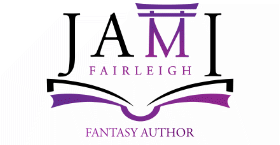
My Roots of Shame and Anxiety

I’d intended this week to talk about Intersectionality and #ownvoices, but the recent media attention on the rise in violence against Asian and Pacific Islanders (APIs) has sent me spinning. Although I’m white-passing, I am half Japanese. Over this past year, my shame and anxiety have grown as people have attacked Asian persons and businesses. The anti-Asian rhetoric from the oval office has made me feel shame and anxiety for myself and my country. I fear for the safety of my Japanese father and stepmother. I fear for my brother, who inherited more of my father’s Japanese features than my mother’s Caucasian looks.
Professional Conversations about Personal Feelings
The media attention has prompted many conversations about how we treat APIs in the United States. The conversations ripple in concentric circles, ensnaring me. The diversity team I’m a part of at work has talked about it on an abstract level, and in a more intimate setting, API coworkers recently shared their personal fears and anxieties. I see prominent API persons discussing the issue on social media, talk shows, and the news, and I am triggered.
Shame is the warm feeling that washes over us, making us feel small, flawed, and never good enough. – Brené Brown
The Shame and Anxiety of Being Other
 Writing about this topic is difficult for me. I was a withdrawn child, bullied, humiliated, and ostracised by my peers for being different. At the start of every school year, I dreaded the inevitable roll call where a white teacher would stumble over my name, Jami Shimizu. Phonetically, it’s Jay-me She-me-zoo.
Writing about this topic is difficult for me. I was a withdrawn child, bullied, humiliated, and ostracised by my peers for being different. At the start of every school year, I dreaded the inevitable roll call where a white teacher would stumble over my name, Jami Shimizu. Phonetically, it’s Jay-me She-me-zoo.
The shame I felt as they butchered it burned, made worse as my peers snickered and rolled their eyes. It got so I’d nod eagerly at anything, just to take the spotlight from me and my weird name. The thing is, it’s not weird and is a common surname. In Japan.
The sense of being “other” followed me through high school. Even though there were other Asian kids in the small, private high school I attended, I didn’t fit with them because I wasn’t Asian enough. I didn’t inherit my father’s straight hair, his monolids, or his accent. I’d grown up with fair skin, freckles, and frizzy hair, but I wasn’t white. The most common question I’m asked is:
“What are you?”
Every time I’m asked, I find the question alarming. What am I? The question feels like an attack. It diminishes me. The question implies I am not normal, and it points out I am other. It makes me feel less-than. The question made me feel pressured to explain my existence. The child-version of me felt tremendous shame and anxiety about my biracial roots.
Uncomfortable with the attention, I drew inward and rarely talked about my Asian roots. To keep myself safe, I walked a careful path, staying out of situations where someone could question what I was. I didn’t speak up or make a fuss. Instead, I tried harder to blend with my background.
Exploring My Identity Through My Writing
As an adult, I feel shame for allowing myself to be severed from the Japanese side of myself. Although I haven’t been to Japan since I was a teenager, I love the food, the architecture, the art, the stories, the monsters, the expressive music of the language, even the weird TV and obsession with key chain tchotchkes. When I was a child, I spoke Japanese fluently but lost it after moving back to the United States. Now, I cannot speak, which makes conversing with my Japanese family difficult.
Through my writing, I’ve been exploring my Japanese side. My short story A Place of Peace is about a Japanese folk monster. I named the main character in my adult fantasy series Matthew Sugiyama. Even the protagonist in my middle grade novel has a Japanese heritage.
With the surge in anti-Asian sentiment, I wonder if my books will find readership, if readers will give my characters a chance. Although my anxiety urges me to whiten the characters, to remove the “otherness” of the worlds I’ve written, I’m still going to put them out there because I’m still trying to prove to myself that there is nothing shameful about being Asian or half Asian. I will continue to write Asian or biracial characters because this is my way of standing up for myself and the younger version of me who was too anxious and ashamed to speak up and ask for help.
Want to do something? Learn, Share, Donate, and Volunteer at https://www.stopasianhate.info/ #StopAsianHate
Header Photo by David Brooke Martin on Unsplash
